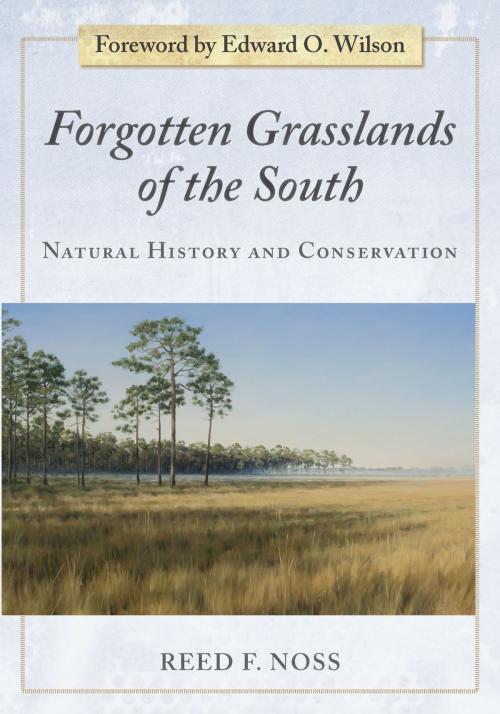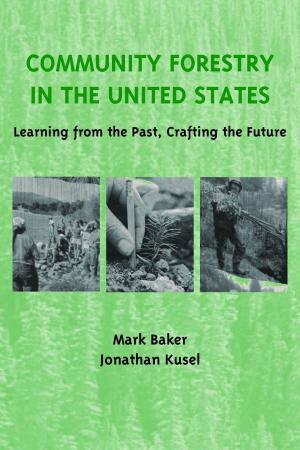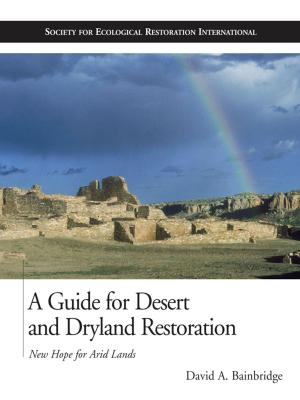Forgotten Grasslands of the South
Natural History and Conservation
Nonfiction, Science & Nature, Nature, Environment, Ecology, Environmental Conservation & Protection| Author: | Reed F. Noss | ISBN: | 9781610912259 |
| Publisher: | Island Press | Publication: | December 3, 2012 |
| Imprint: | Island Press | Language: | English |
| Author: | Reed F. Noss |
| ISBN: | 9781610912259 |
| Publisher: | Island Press |
| Publication: | December 3, 2012 |
| Imprint: | Island Press |
| Language: | English |
Forgotten Grasslands of the South is a literary and scientific case study of some of the biologically richest and mendangered ecosystems in North America. Ecologist Reed Noss tells the story of how southern grasslands arose and persisted over time and addresses questions that are fundamental for conserving these vital yet poorly understood ecosystems.
The author examines the natural history of southern grasslands, their origin and history (geologic, vegetation, and human), biological hotspots and endangered ecosystems, and physical determinants of grassland distribution, including ecology, soils, landform and hydrology fire, herbivores, and ecological interactions. The final chapter presents a general conservation strategy for southern grasslands, including prioritization, protection, restoration, and management, along with a prognosis for the future.
In addition to offering fascinating new information about these little-studied ecosystems, Noss demonstrates how natural history is central to the practice of conservation. Natural history has been on a declining trajectory for decades, as theory and experimentation have dominated the field of ecology. Ecologists are coming to realize that these divergapproaches are in fact complementary, and that pursuing them together can bring greater knowledge and understanding of how the natural world works and how we can best conserve it.
Forgotten Grasslands of the South explores the overarching importance of ecological processes in maintaining healthy ecosystems, and is the first book of its kind to apply natural history, in a modern, comprehensive sense, to the conservation of biodiversity across a broad region. It sets a new standard for scientific literature and is essential reading not only for those who study and work to conserve the southern grasslands but also for everyone who is fascinated by the natural world.
Forgotten Grasslands of the South is a literary and scientific case study of some of the biologically richest and mendangered ecosystems in North America. Ecologist Reed Noss tells the story of how southern grasslands arose and persisted over time and addresses questions that are fundamental for conserving these vital yet poorly understood ecosystems.
The author examines the natural history of southern grasslands, their origin and history (geologic, vegetation, and human), biological hotspots and endangered ecosystems, and physical determinants of grassland distribution, including ecology, soils, landform and hydrology fire, herbivores, and ecological interactions. The final chapter presents a general conservation strategy for southern grasslands, including prioritization, protection, restoration, and management, along with a prognosis for the future.
In addition to offering fascinating new information about these little-studied ecosystems, Noss demonstrates how natural history is central to the practice of conservation. Natural history has been on a declining trajectory for decades, as theory and experimentation have dominated the field of ecology. Ecologists are coming to realize that these divergapproaches are in fact complementary, and that pursuing them together can bring greater knowledge and understanding of how the natural world works and how we can best conserve it.
Forgotten Grasslands of the South explores the overarching importance of ecological processes in maintaining healthy ecosystems, and is the first book of its kind to apply natural history, in a modern, comprehensive sense, to the conservation of biodiversity across a broad region. It sets a new standard for scientific literature and is essential reading not only for those who study and work to conserve the southern grasslands but also for everyone who is fascinated by the natural world.















